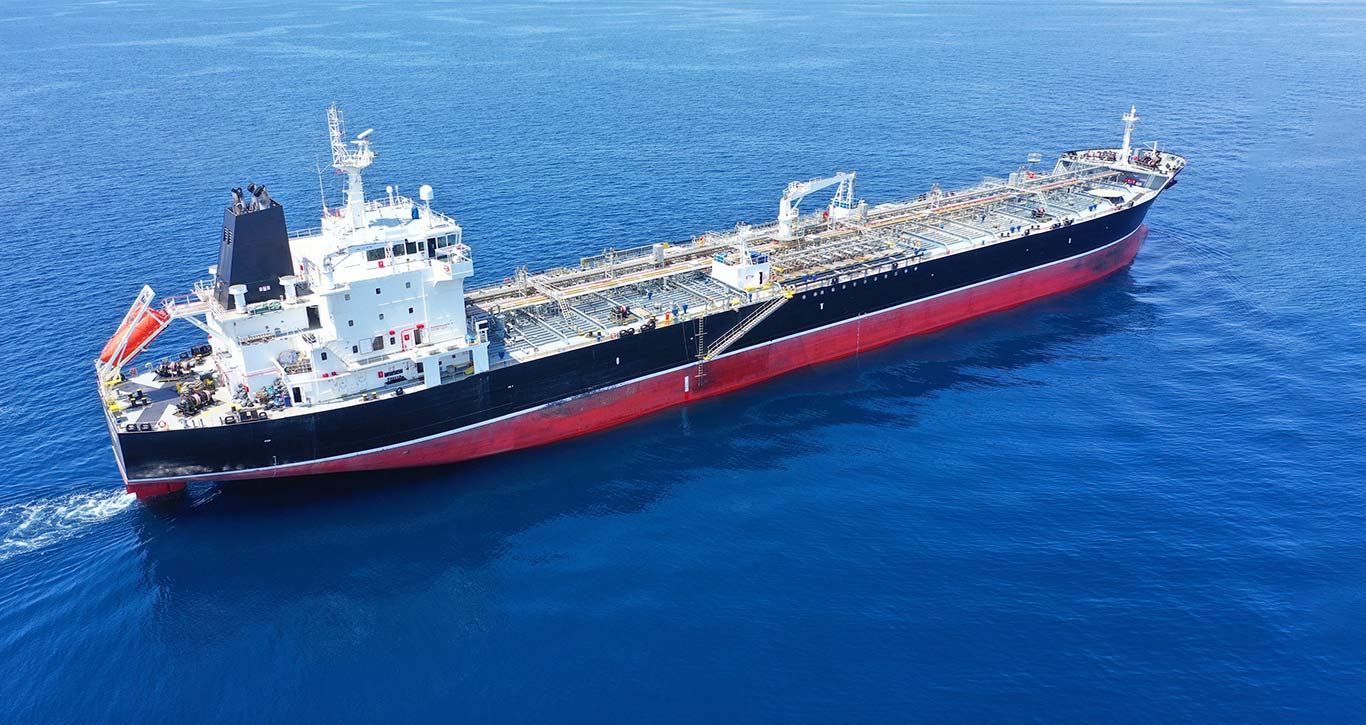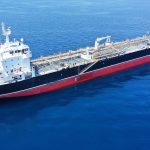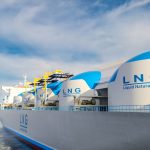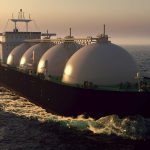

Worldscale vs. AFRA: A Comprehensive Guide to Oil Tanker Freight Rates
Understanding freight rates in the oil tanker industry is crucial for shipowners, charterers, oil companies, and traders involved in the global transport of crude oil and refined products. Two key systems, Worldscale and AFRA (Average Freight Rate Assessment), provide standardized methods for calculating and comparing these rates. While both systems serve similar purposes, they differ significantly in methodology, application, and flexibility. This article offers an in-depth guide to understanding Worldscale and AFRA, highlighting their differences and providing practical insights on how to use these scales effectively.
Introduction to Oil Tanker Freight Rates
Oil tanker freight rates are vital for global energy markets, affecting everything from oil prices to supply chain efficiency. These rates are determined using various systems, with Worldscale and AFRA being the most prominent. Each system offers a standardized approach, helping market participants negotiate, plan, and operate shipping contracts effectively.
What is the Worldscale System?
Worldscale is a global index used to calculate freight rates for transporting crude oil and refined products between ports. It was developed in the 1960s to create a universal system that could adapt to different vessel sizes, cargo types, and routes.
How Worldscale Works
The Worldscale system operates on a benchmark known as WS 100, which represents the base cost (in USD per ton) for transporting a cargo of oil over a standard distance (usually 13,000 miles) for a standard vessel size (typically 75,000 tons). The WS 100 rate is set as the reference point, and actual freight rates are expressed as a percentage of this benchmark, allowing flexibility based on market conditions. For example:
- WS 120 means the rate is 120% of the WS 100 benchmark.
- WS 70 indicates that the rate is 70% of the benchmark.
Factors Influencing Worldscale Calculations
Worldscale rates take several factors into account:
- Bunker Costs: The price of marine fuel significantly influences Worldscale rates as it is a primary operational expense.
- Port Fees: Charges incurred at loading and unloading ports are included.
- Voyage Distance and Time: The Worldscale system adjusts for variations in voyage distance and time, making it flexible and applicable to diverse routes.
Worldscale’s adaptability makes it an essential tool for spot charters and dynamic route planning. For example, it is commonly used in spot markets where rates fluctuate frequently based on oil prices, seasonal demand, and geopolitical events.
What is the AFRA Scale?
The AFRA (Average Freight Rate Assessment) scale, developed by Shell in the 1950s, provides a different approach. AFRA categorizes tankers into size groups, setting average freight rates (USD per ton) for each category based on historical data and typical operational costs. The AFRA scale offers fixed-rate benchmarks for each tanker size, making it simpler but less adaptable than Worldscale.
How AFRA Works
The AFRA system categorizes vessels into size classes, each with its own set of average rates. These rates are periodically updated based on factors such as:
- Historical Data: Past freight costs and operational expenses.
- Voyage Length: Typical voyage distances for each vessel class.
- Operating Costs: Average bunker prices and port fees.
AFRA is most commonly used for long-term charters and as a benchmark in contract negotiations, providing a stable, standardized rate system that charterers and shipowners can reference.
Comparing Worldscale and AFRA: Key Differences
| Aspect | Worldscale | AFRA |
| Purpose | Provides a dynamic benchmark for specific routes and cargo sizes | Offers average rates for different tanker size categories |
| Calculation | Based on a standard cargo and distance (WS 100) | Based on historical averages and tanker operating costs |
| Flexibility | Highly adaptable to specific conditions (cargo size, route, market conditions) | Less adaptable, more fixed, and used for long-term reference |
| Usage | Commonly used in spot chartering and short-term agreements | Often used in long-term charters and as a general industry benchmark |
Worldscale’s flexibility makes it suitable for fluctuating market conditions and diverse voyages, while AFRA’s fixed structure is ideal for long-term stability in rate assessments.
AFRA Tanker Size Categories
| Vessel Size | DWT Range | Typical Cargo Capacity | Characteristics & Usage |
| General Purpose (GP) | Up to 25,000 DWT | 15,000 – 25,000 tons | Smallest tanker class in AFRA. Primarily used for short-haul and regional trade of refined products such as gasoline, diesel, or jet fuel. |
| Handysize | 25,000 – 50,000 DWT | 25,000 – 50,000 tons | Suited for both regional and some longer-haul routes. Often transports refined petroleum products, chemicals, and other specialized cargoes. |
| Panamax | 50,000 – 80,000 DWT | 50,000 – 70,000 tons | Designed to fit through the Panama Canal. Typically used for refined products and crude oil on regional and intercontinental routes. |
| Aframax | 80,000 – 120,000 DWT | 80,000 – 100,000 tons | The most common tanker size. Often used in short-to-medium-haul routes, including in the North Sea and Mediterranean. Named after AFRA scale. Suitable for crude oil and refined products. |
| Suezmax | 120,000 – 200,000 DWT | 130,000 – 150,000 tons | Largest vessel size that can pass through the Suez Canal fully laden. Primarily used for crude oil transport on long-haul routes like West Africa to Europe. |
| VLCC (Very Large Crude Carrier) | 200,000 – 320,000 DWT | 250,000 – 320,000 tons | Commonly used for long-haul crude oil transport between the Middle East and major oil consumption hubs (e.g., Asia, Europe, and the U.S.). Cannot transit through canals; requires deepwater ports. |
| ULCC (Ultra Large Crude Carrier) | 320,000+ DWT | 320,000 – 550,000+ tons | The largest class of tankers, used for long-distance crude oil transport. Limited to a few ports globally due to their massive size. Typically deployed on routes such as the Persian Gulf to Asia. |
Worldscale Tanker Classes
| Tanker Class | DWT Range | Typical Cargo Capacity | Typical Routes & Usage |
| Handysize | 10,000 – 50,000 DWT | 15,000 – 50,000 tons | Primarily used for regional and coastal trade of refined products (e.g., gasoline, jet fuel) on shorter routes. Examples include intra-European trade or routes within Southeast Asia. |
| MR (Medium Range) | 40,000 – 55,000 DWT | 40,000 – 55,000 tons | Ideal for refined products and chemicals on medium-range routes such as the U.S. Gulf Coast to Latin America or Europe to West Africa. |
| LR1 (Long Range 1) | 55,000 – 80,000 DWT | 55,000 – 80,000 tons | Often used for clean products like diesel or jet fuel over longer routes, such as from the Middle East to Europe or Asia. |
| LR2 (Long Range 2) | 80,000 – 160,000 DWT | 80,000 – 160,000 tons | Primarily employed for both crude and clean product trades, LR2 vessels operate on long-haul routes such as the Middle East to Europe or Asia to the U.S. |
| Aframax | 80,000 – 120,000 DWT | 80,000 – 100,000 tons | Versatile tanker size for short-to-medium haul routes carrying both crude oil and refined products. Typical routes include the North Sea to Europe or the Mediterranean to Asia. |
| Suezmax | 120,000 – 200,000 DWT | 130,000 – 150,000 tons | The largest tanker that can pass through the Suez Canal when fully loaded. Common on routes such as West Africa to Europe or the Middle East to Europe/Asia. |
| VLCC (Very Large Crude Carrier) | 200,000 – 320,000 DWT | 250,000 – 320,000 tons | Typically deployed on long-haul crude oil routes like the Persian Gulf to China, Japan, or Europe. Requires deepwater ports. |
| ULCC (Ultra Large Crude Carrier) | 320,000+ DWT | 320,000 – 550,000+ tons | Limited to specific long-haul routes due to port and draft restrictions, such as the Persian Gulf to China or the U.S. Often used to transport large volumes of crude oil efficiently. |
How Worldscale and AFRA Impact Oil Tanker Shipping Rates
Both Worldscale and AFRA play critical roles in setting shipping rates:
- Market Conditions: Worldscale rates are sensitive to bunker costs, seasonal demand, and geopolitical events, offering real-time reflection of market fluctuations.
- Long-Term Forecasting: AFRA provides stability, allowing shipowners and charterers to negotiate long-term contracts with more predictability. Its static nature makes it less reactive but useful for planning purposes.
Practical Considerations for Using Worldscale and AFRA
Shipowners and charterers often use these scales in tandem:
- Interpreting Worldscale Percentages: Knowing how to convert WS percentages into actual costs helps manage spot charters effectively.
- Using AFRA for Negotiations: The AFRA scale is helpful in benchmarking and setting fixed rates in long-term charters.
- Third-Party Resources: Platforms like the Baltic Exchange, Platts, and Clarksons offer access to the latest rate assessments for both systems.
Sources for Obtaining AFRA and Worldscale Rates
To obtain up-to-date rates, industry professionals rely on several trusted resources:
Baltic Exchange
- The Baltic Exchange is one of the leading providers of tanker assessments for both Worldscale and Time Charter Equivalent (TCE) rates. It offers daily and weekly market data, covering various tanker classes and routes. You can access this data through a membership subscription or by obtaining a Baltic Data license for using their indices in contracts.
Clarksons Research
- Clarksons is a prominent shipbroker and research firm that provides comprehensive data on tanker rates, including AFRA and Worldscale assessments. They publish detailed market reports and indices, accessible through subscription services.
Platts (S&P Global)
- Platts is a division of S&P Global, offering detailed AFRA and Worldscale assessments for the shipping industry. Their subscription-based services provide frequent updates on market trends, bunker prices, and specific tanker route assessments.
Lloyd’s List
- Lloyd’s List provides valuable information on shipping markets, including AFRA and Worldscale rates. They offer comprehensive tanker reports and analysis, available through subscription services.
Trade Associations (INTERTANKO and BIMCO)
- Organizations like INTERTANKO (International Association of Independent Tanker Owners) and BIMCO (Baltic and International Maritime Council) provide summaries and updates on AFRA and Worldscale rates to their members as part of broader maritime industry services.
Conclusion
Worldscale and AFRA are essential tools in the oil tanker shipping industry, providing standardized methods for calculating and comparing freight rates. Understanding the differences between these scales helps industry professionals make informed decisions, optimize operations, and navigate the complexities of global oil transport. Whether for spot charters or long-term agreements, knowledge of these systems is crucial for success in maritime logistics.
By leveraging the right resources and understanding the nuances of each scale, shipowners, charterers, and traders can strategically plan and manage their tanker operations, ensuring efficiency and profitability in a fluctuating market.
To find an oil tanker available for charter, please view our current listings: https://chartership.com/offshore-vessels/tankers/oil/
Related posts


Buy and Sell Offshore Vessels

Market Trends in LNG Tanker Sales: What Buyers and Sellers Should Know






